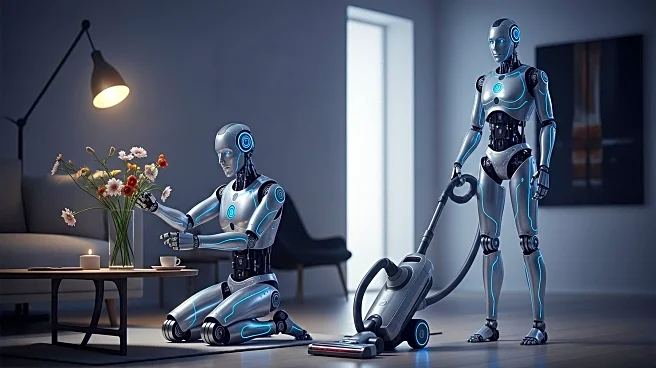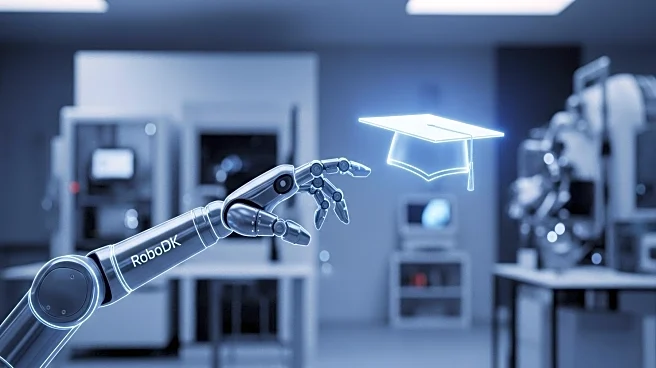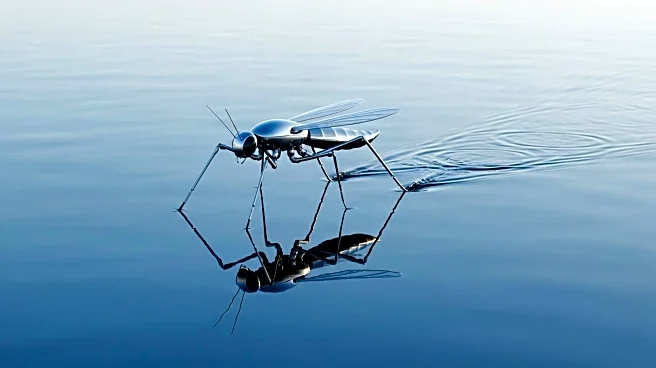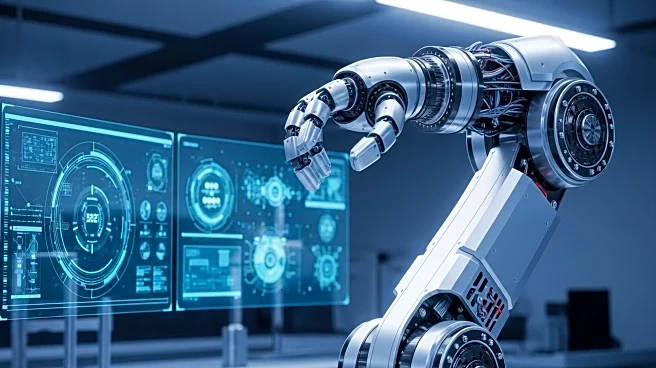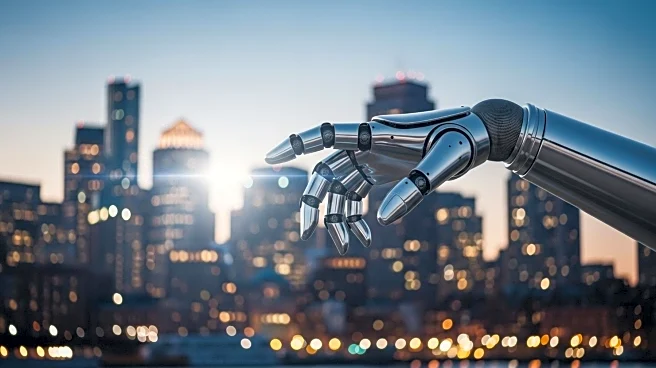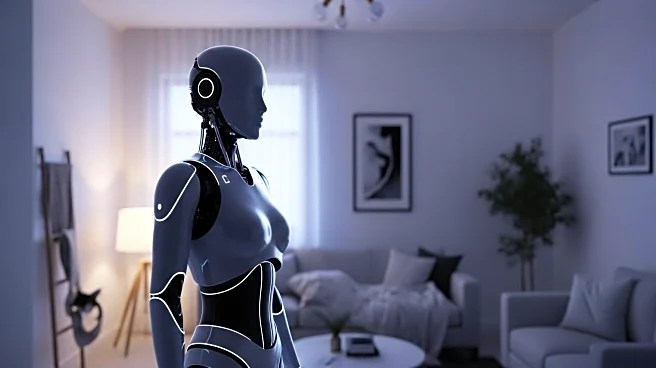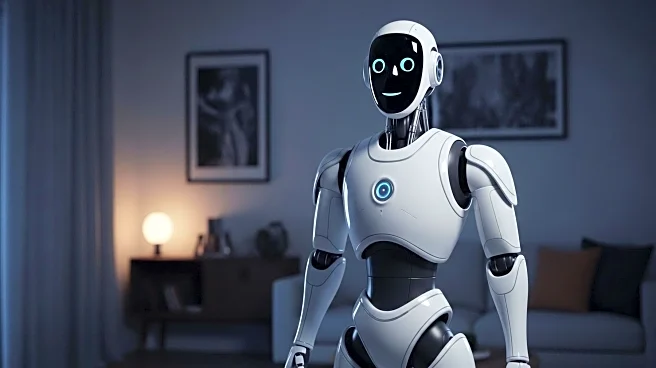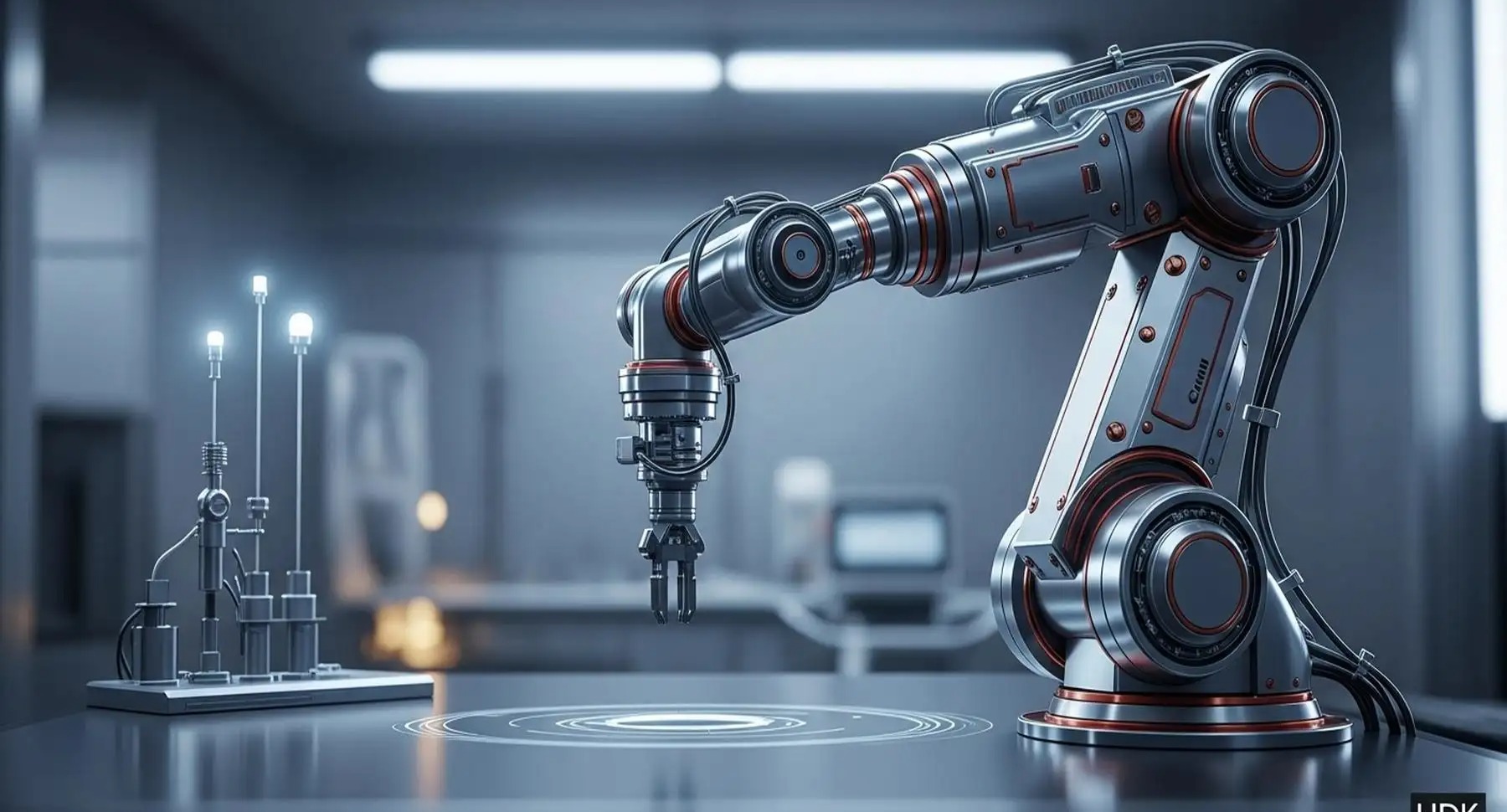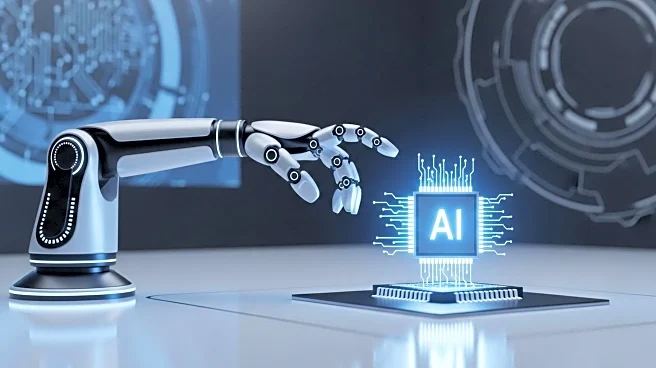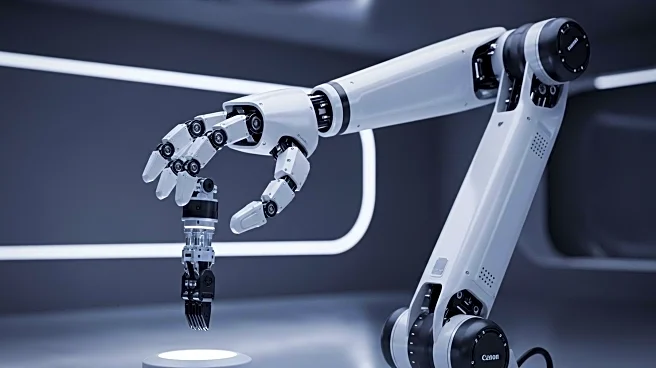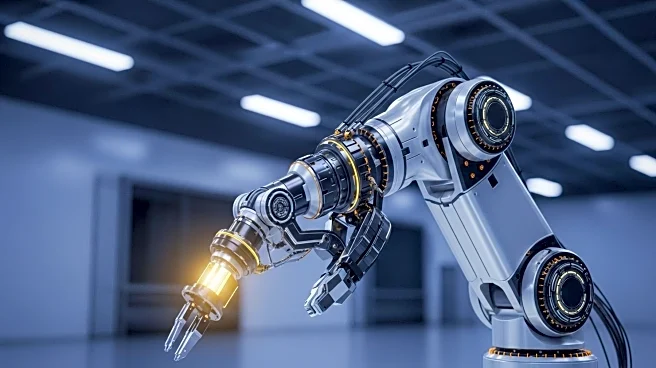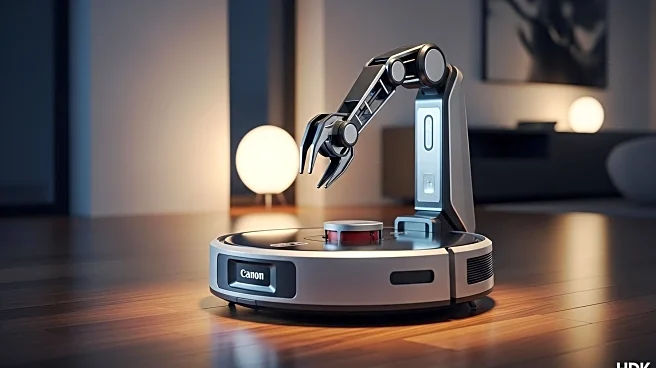What is the story about?
What's Happening?
Figure AI's humanoid robot, Helix, has showcased its ability to adapt to various household tasks using its Vision Language Action (VLA) model. Initially demonstrated in laundry tasks, Helix has now successfully loaded a dishwasher, a task that involves complex robotic challenges such as isolating dishes from clutter, reorienting items, and handling fragile objects with precision. The robot's ability to perform these tasks without new algorithms or special engineering highlights its adaptability through new data inputs. This development marks a significant step towards scalable humanoid intelligence, where a single system can incrementally learn new capabilities.
Why It's Important?
The advancements demonstrated by Helix represent a significant leap in the field of humanoid robotics, particularly in the realm of household automation. This could lead to broader applications in domestic settings, potentially transforming how everyday tasks are managed. The ability to adapt to new tasks with minimal engineering changes suggests a future where robots can seamlessly integrate into various environments, reducing the need for human intervention in routine chores. This could impact industries focused on home automation and robotics, offering new opportunities for innovation and efficiency.
What's Next?
As Helix continues to learn and adapt to new tasks, Figure AI may explore further applications beyond household chores, potentially venturing into areas like logistics and service industries. The ongoing development of Helix's capabilities could lead to collaborations with companies seeking automation solutions, driving advancements in robotic technology. Stakeholders in the robotics industry will likely monitor these developments closely, considering potential investments and partnerships to leverage Helix's adaptable technology.
AI Generated Content
Do you find this article useful?
